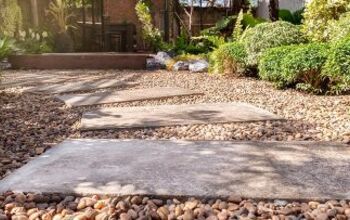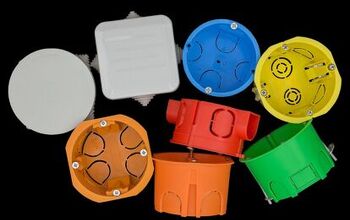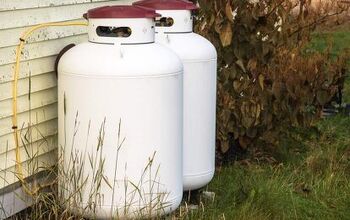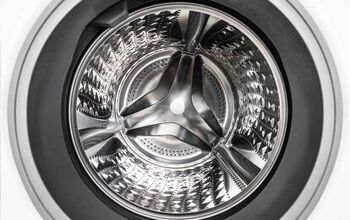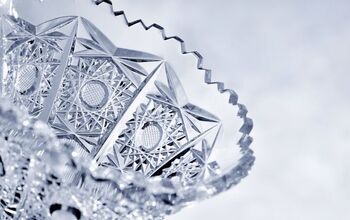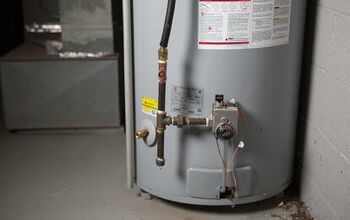How To Conserve Water In The Garden

Maintaining a garden is a big responsibility, as you must keep up with maintenance. Of course, watering is the biggest chore, and you may worry about how much water you waste each day. You’re not alone if you’ve ever wondered how to conserve water in the garden.
The easiest way to conserve water in the garden is to water your plants early in the day before it gets too hot. It’s also important to group your plants close together to reduce water waste and save time while gardening. You can also save water while gardening if you apply mulch, plant native plants, and use an efficient nozzle.
You can also save water if you water the soil deeply to help the roots absorb as much as possible. Follow along as we highlight the easiest and best ways to conserve water in the garden.
8 Ways To Save Water In The Garden
1. Water Your Plants Before It Gets Too Hot
Extreme heat can make watering plants feel like a miserable chore during the summer. That’s especially true in July and August when it’s hard to escape the heat, and your plants need a lot of water. By midday, the soil will likely dry out, and you will need to use more water than you would have earlier in the day.
The water will evaporate slower if you water your plants before it gets too hot. This means that your plants will absorb more moisture, which is ultimately needed for them to thrive and grow. Watering your plants early in the day can prepare them to soak in nutrients and avoid dehydration.
Keep in mind that you may need to check your plants later in the afternoon or early evening. Sometimes, the soil can become dry on extremely hot days, even if you water your plants in the morning. Some people even wait to water their plants until nighttime when it’s cool, but that is risky during the summer.
2. Strategically Place Your Plants
Spacing your plants too far apart can make watering them correctly quite difficult. Naturally, some plants require more water and more space than others, and you can use that to your advantage. Divide your garden into sections based on the watering and spacing needs of your plants, and water them accordingly.
For example, you can group plants that require a lot of water closely together, so you can water them at once. That way, you can concentrate the water in one section to minimize waste and encourage healthy growth. There’s no point in putting drought-tolerant plants near ones that require lots of water.
Research how much water each of your plants needs, and group them accordingly. This will not only conserve water, but it will also make your garden look better.
3. Water Deeply
Watering plants may seem simple, but for some people, it's not. For example, some people hold their watering cans high, pour water onto the leaves, and let it drip. This is effective in some cases, but it doesn’t guarantee that you’ll water the roots deeply.
That means that you must use more water to soak the roots, as a lot of it won’t penetrate deeply right away. This is wasteful, ineffective, and a bad way to nourish your plants on hot summer days. You can conserve water if you aim directly at the soil closest to the plant’s roots to maximize water absorption.
That way, you won’t have to use nearly as much water, which can ultimately save time. Naturally, some plants, like cacti and succulents, won’t need as much water. However, you should at least deeply water your soil beds and potted plants.
4. Use A Different Nozzle
The nozzle you attach to your hose has a lot to do with how efficiently you will water your plants. Many of the stock nozzles that come with cheap garden hoses can be quite inefficient. Nozzles differ in many ways, such as the spray rate, which affects water consumption and even how well the soil absorbs water.
Efficient nozzles have several settings that let you alter the spray pattern. For example, you can switch to the mist setting to gently water drought-tolerant plants. Conversely, you can switch to a setting that mimics rain and expels more water at once.
Efficient nozzles don’t deliver water nearly as quickly, which takes longer, but reduces waste. That way, you can ensure all of the water reaches the soil, and more importantly, the roots. Efficient nozzles start at $10, but you can find nice kits for roughly $100 if you want more accessories and settings.
5. Apply Mulch
Many seasoned gardeners swear by mulch, and it’s with good reason. Not only can mulch help keep weeds at bay, but it can also improve water retention. This is partially because mulch helps reduce water runoff, and ensures it stays where it needs to be.
Mulch also helps protect soil from the heat, and can reduce evaporation and ensure the roots get enough water. However, you must be careful not to apply too much mulch, or else you may smother your plants. It’s worth hiring a landscaper if you haven’t applied mulch before and you have a big yard.
Ideally, you should apply organic mulch, as it can introduce nutrients to the soil as the organic matter breaks down. Regular mulch may be better for weed control, but you can fight weeds with other methods if you're worried about them.
6. Stick To Native Plants
Do you have some plants from other climate zones that require a lot of water? If so, that’s because those plants aren’t likely to thrive in your climate due to the temperature, rain patterns, and humidity. For example, tropical plants require a lot of water and often struggle in the Midwest, where it doesn’t rain as often as it does in Florida.
However, you may also notice that your native plants are low-maintenance and require less water than non-native plants. For example, purple coneflowers are native to Illinois and would thrive more easily than palm trees in that region. Growing native plants comes with many benefits, and water conservation is one of the biggest ones.
They are low-maintenance and attract pollinators, which will ultimately benefit all the plants in your garden. It’s also a great idea to group your native plants to make them easier to water. This will save time and water and ultimately help ensure your native perennials come back next year.
7. Use A Different Type Of Soil
The type of soil you use has a lot to do with how much water you must use while gardening. For example, you may waste a lot of water if you use sandy soil. That’s because water moves through sandy soil quite quickly, which is the last thing your plants need.
Conversely, loam and clay soils can help you conserve water in the garden. Loam and clay soils both have good drainage rates, which minimizes waste and ensures the roots get enough water. It’s also important to use organic matter, nutrients, and mulch to keep your soil healthy.
Nutrients are just as important as the type of soil you use in the garden. Potassium, nitrogen, and phosphorus are especially essential for your soil and plants.
8. Collect Rainwater
It’s a mistake to let good rainwater go to waste, especially if you want to maximize efficiency. Anyone can collect rainwater for their plants, and all it takes is a few barrels. Some people even partially bury barrels in the ground to maximize how much rainwater they collect.
Otherwise, you can place tubs, barrels, and buckets in an open area that gets lots of rain. It helps to pick low-lying spots, as you’ll be more likely to collect a lot of rainwater. Of course, this is mostly effective in areas with lots of rain, but anyone can benefit from it.
Collecting rainwater can help reduce your water bill, and it helps you do your part to help the environment. It ultimately takes little time and effort, and anyone can do it.
Summing It Up
You can save water while gardening if you switch to an efficient nozzle and group your plants close together. Divide your plants based on how much water they need, so you can water them simultaneously without wasting water. You can also conserve water in the garden if you plant native plants, apply mulch, and water the soil deeply.
Related Guides:

Nick Durante is a professional writer with a primary focus on home improvement. When he is not writing about home improvement or taking on projects around the house, he likes to read and create art. He is always looking towards the newest trends in home improvement.
More by Nick Durante














